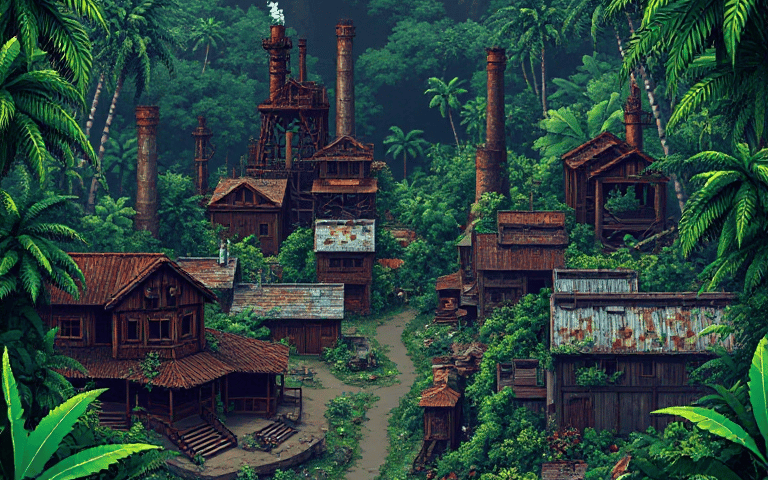The Rise and Fall of Fordlandia: Henry Ford's Failed Utopia in the Amazon
Henry Ford's ambitious project, Fordlandia, aimed to establish a rubber-producing utopia in the Amazon rainforest. However, cultural clashes, environmental challenges, and operational failures led to its eventual collapse, leaving behind a haunting legacy.
DipVai
1/30/20252 min read


In the early 20th century, American industrialist Henry Ford embarked on an ambitious project deep in the Amazon rainforest. He envisioned a self-sufficient community dedicated to the production of rubber for his growing automobile empire. What began as an ambitious venture aimed at efficiency and innovation quickly devolved into one of the most infamous failures in industrial history. This is the story of Fordlandia—a utopia that was never meant to be.
The Vision of a Rubber Empire
By the 1920s, Ford’s automotive empire was at its peak. However, the company faced a pressing problem: dependence on British-controlled rubber plantations in Southeast Asia. Determined to break free from this monopoly, Ford sought to establish his own rubber production facility.
In 1928, he acquired a 2.5-million-acre plot of land along the Tapajós River in the Brazilian Amazon. Fordlandia was intended to be more than just a plantation—it was envisioned as a model American town complete with modern houses, schools, hospitals, and recreational facilities.
A Cultural Clash in the Jungle
Ford brought American ideals and practices to the heart of the Amazon, but his rigid approach quickly led to problems. Workers were required to adhere to strict rules, including bans on alcohol and tobacco. They were served unfamiliar American food instead of their traditional cuisine and forced to work according to Ford’s regimented schedules.
These policies bred resentment among the Brazilian laborers, who were accustomed to a more relaxed way of life. Cultural misunderstandings and dissatisfaction led to frequent conflicts, strikes, and even riots.
Environmental and Operational Challenges
Nature itself proved to be Fordlandia’s greatest adversary. Ford’s managers, inexperienced in tropical agriculture, planted rubber trees too closely together, creating a breeding ground for pests and diseases. Fungal infections decimated the plantations, making it impossible to produce the quantities of rubber Ford had envisioned.
Additionally, the harsh environment—intense heat, heavy rainfall, and dense jungle—posed logistical and operational challenges that the American managers were ill-equipped to handle.
The Inevitable Collapse
By the early 1940s, Fordlandia was a financial and operational disaster. Ford ultimately abandoned the project, having lost millions of dollars. The Brazilian government eventually took control of the land.
Despite its failure, Fordlandia left a lasting legacy. The decaying remnants of the town—including derelict houses, factories, and infrastructure—stand as haunting reminders of Ford’s grand but misguided vision.
Lessons Learned
Fordlandia’s collapse serves as a cautionary tale about the dangers of imposing foreign cultural and industrial practices on unfamiliar environments. It highlights the importance of understanding local contexts, respecting cultural differences, and adapting strategies to the unique challenges of any region.
A Utopian Dream Gone Awry
While Fordlandia never achieved its founder’s lofty ambitions, it remains a fascinating chapter in the history of industrialization and globalization. Its story continues to captivate historians, environmentalists, and those intrigued by the intersection of ambition and hubris.
Get in touch
itsusdipvai@gmail.com
